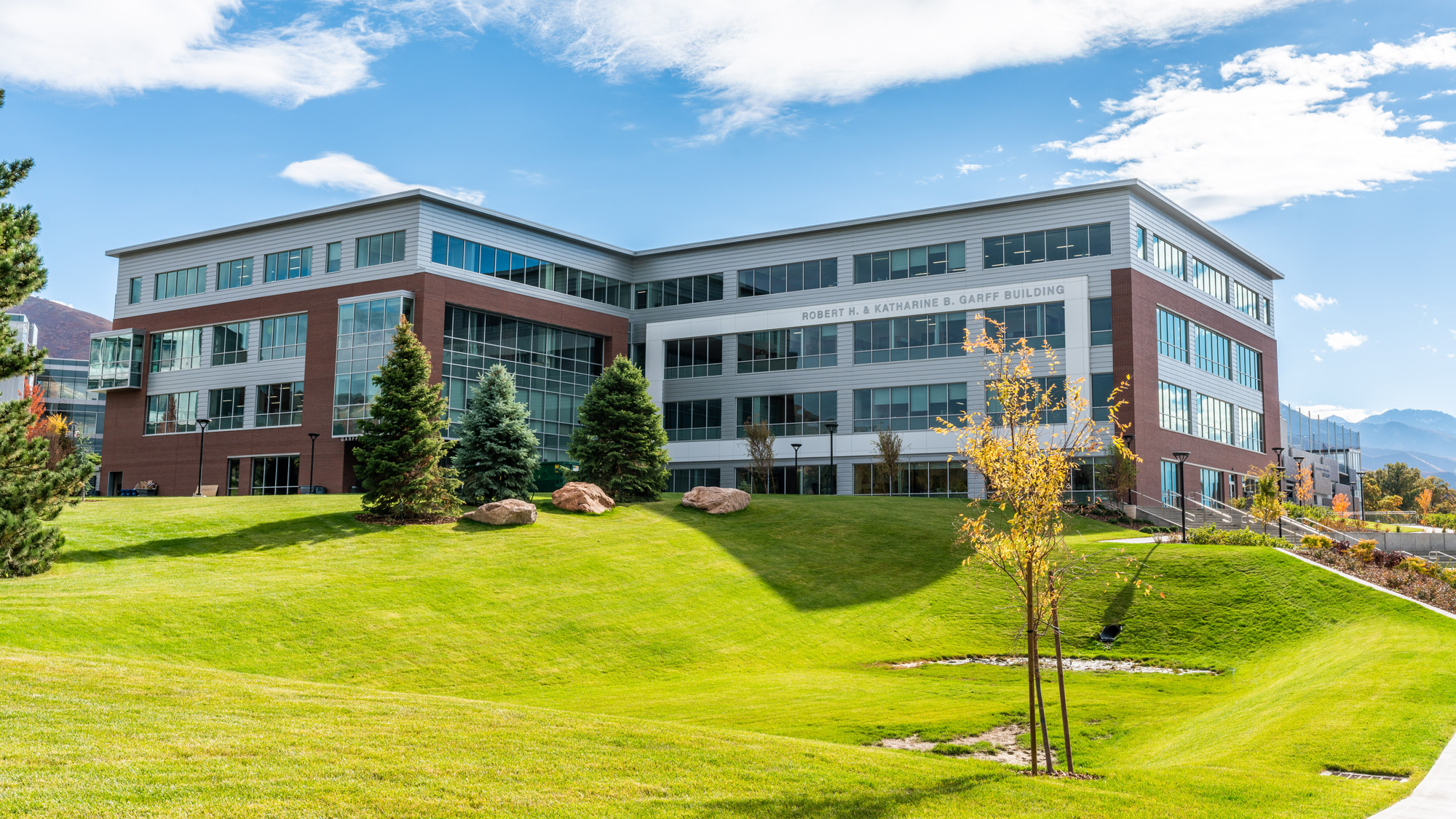
This article, originally published in @theu October 24, 2019, was written by Wes Mangum,
The University of Utah is serious about leading the way in energy efficiency and that’s garnering national attention.
The Robert H. & Katherine B. Garff Building was given an award recognizing effort in innovation and teamwork by Engineering News Record (ENR), widely regarded as one of the construction industry’s most authoritative publications. The collaborative effort on the Garff Building’s construction delivered a highly energy-efficient building, in line with the university’s aggressive sustainability goals. The ENR award was presented at a ceremony on Oct. 24.
The award comes just over a year after the Garff Building was dedicated by the David Eccles School of Business. The 150,000-square-foot building houses the university’s Online MBA, Full-Time MBA, Professional MBA and Executive Educations programs. It also supports a Career Services center for both graduate and undergraduate students. The Garff Building was made possible through the generosity of more than 350 donors, including a $12 million donation from the Garff family.
The Garff Building was the university’s first-ever all-electric building and is one of the most energy-efficient buildings on campus. The hearing and cooling of a building are often where most energy is consumed. The Garff Building took a new approach to solve this problem. The secret lies in the building’s air-cooled Variable Refrigerant Flow (VRF) system. This system works to heat and cool the building by extracting and diffusing outside air. The Garff Building’s VRF system is similar to a residential heat pump but on a commercial scale.
University Project Managers Mark Grabl and Michael Beck worked with VCBO Architects and Jacobsen Construction Co. to overcome a series of challenges in the design and construction phases. The Garff Building was constructed around the demolition of Milton Bennion Hall, the previous home to the David Eccles School of Business. In addition, the nearby construction of the Kem and Carolyn Gardner Commons provided a very limited staging area for construction teams.
“We challenged everything to try and arrive at the best decisions possible,” Beck said. “We left no stone unturned.”
University construction officials and Jacobsen Construction Co., along with the various subcontractors on the project, had to rely on an innovative inventory management approach called just-in-time delivery. Rather than delivering and stockpiling materials to be used as the project develops, just-in-time delivery calls for a lean approach that prioritizes the delivery of materials according to the project schedule. This approach required the team to keep an updated schedule and constant line of communication throughout the project.
“All of the partners within the design team and the construction team were flexible in their approach,” Beck said. “They knew that there were going to be changes on the fly that had to be incorporated.”
The Utah Division of Facilities Construction and Management (DFCM) assisted Beck and Grabl in meeting the university’s needs for the facility. Taylor Maxfield, a Project Manager for DFCM, listed the design and construction teams’ synergy as a vital element in the building’s success.
“The project was successful due to a very open dialogue between all parties,” Maxfield said. “The team wasn’t shy of calling each other out. We trusted each other and did everything we could to support each other. I believe we tried to understand each other’s processes and work with each other in mind.”
Grabl and Beck placed an emphasis on aligning the Garff Building’s budget value with the university’s values. State-of-the-art technology and an aesthetically pleasing design were important to not only attract top business students but to help propel them to success as they leave the doors of the Garff Building.
